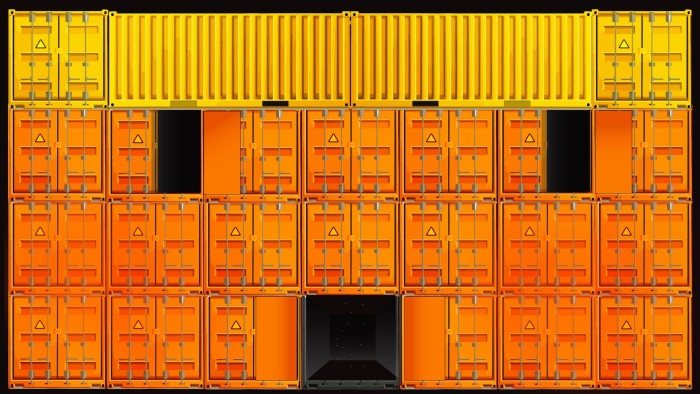Unlock the White House Watch newsletter for free
Your guide to what the 2024 US election means for Washington and the world
A few months ago, I dined with some of Canada’s business leaders and Robert Lighthizer, a key trade adviser to the next US president, Donald Trump.
I expected a calm meal — Canadian leaders are usually so polite that a senior American politician once jokingly described them to me as the “herbivores” of global affairs.
Not so when confronted with Lighthizer, however. When he told the table that Trump could impose 60 per cent tariffs on Chinese imports and 10 per cent on those from Canada and Mexico, there was noisy shock.
“We have the USMCA!” one Canadian chief executive retorted, referring to the successor to the North American Free Trade Agreement. To which Lighthizer replied that “no deal is forever”, sparking some less than polite words.
That reaction is now being replicated and magnified. This week Trump posted on Truth Social of his desire to impose 25 per cent tariffs on Canada and Mexico on his first day in office “on ALL products coming into the United States”.
And while most executives and investors have already mentally prepared themselves for worsening US-China ties, Trump’s threats to the USMCA are something of a shock.
No wonder: the administration of Joe Biden explicitly encouraged American companies to use “nearshoring” and “friendshoring” strategies to cope with deteriorating US-China links — for instance by putting production in neighbouring countries such as Mexico.
And many CEOs have hitherto assumed that Trump would not reverse this since it is against his economic self-interest: cross-border supply chains are so integrated that it would be hard to disentangle these links and economically damaging for America. To cite just one example: cars with a “made in America” tag are built with supply chains that, on average, cross the US-Mexican border seven to eight times.
However, Trump’s post reveals three key things. The first and most obvious point, as I have outlined before, is that it is wildly naive to assume that “friendshoring” will always be friendly. The second is that Trump is now trying to test the boundaries of action, by floating “shocking” rhetoric to see how other nations and the markets react.
That is no surprise. Throughout his career — and first term in office — Trump has consistently aimed to destabilise his rivals by issuing unpredictable and extreme threats. He will now double down. After all, his experience has taught him that the boundaries for possible action lie well beyond mainstream norms. And such threats often work.
Just look at how quickly Justin Trudeau, Canadian premier, got on the phone with Trump this week, seeking to find ways to appease him, even as he threatened retaliation. Or how Christine Lagarde, president of the European Central Bank, has urged Europe “to buy certain things from the United States”, such as liquefied natural gas and defence equipment.
Third, Trump’s rhetoric is not “just” about bullying others; it also reflects a wider ideological shift. In recent decades most economists and CEOs have instinctively viewed trade in the frame used by the 18th-century economist Adam Smith, namely as a set of economic flows between countries of similar(ish) status, that can each benefit by making the most of their differing natural advantages.
However, Trump’s team sees trade through the prism of hierarchies of power — ie as a tool to increase America’s market dominance in a world where trading “partners” are anything but equal. Trade policy is thus not just defensive, or driven only by domestic goals (such as bringing industrial processes onshore to create jobs); it also aims to suck economic activity from rivals to America, and to weaken them, say by forcing the producers of commodities in other countries to slash their export prices.
This mercantilist mindset is not remotely new. The economist Albert Hirschman described it well in his classic 1945 book National Power and the Structure of Foreign Trade, which notes that for mercantilists “an increase of wealth through foreign trade leads to an increase in power relative to that of other countries . . . [and] a conflict between the wealth and power aims of the state is well-nigh unthinkable”.
Phil Verleger, an economist and senior fellow at the Niskanen Center, considers Hirschman an invaluable guide to current events, and future risks. “History is repeating itself,” he tells me.
However, the political stance is a shock to anyone used to seeing free trade in “rational” economic terms. And even if Trump’s aggressive rhetoric turns out to be mostly bluster — as it often was in his first term — this cognitive shift needs to be understood.
Currency traders have already priced this in. This is why the Mexican peso has underperformed this month (Claudia Sheinbaum, Mexican president, is trying to defy Trump), while the Turkish lira has outperformed (Trump seems to like Turkey’s strongman leader, Recep Tayyip Erdoğan).
However, the equity markets do not seem to have truly woken up. Nor have some corporate boards. So, if nothing else, we should all take Verleger’s advice and re-read Hirschman’s pithy warnings. Particularly if you live in a less powerful nation — like Canada, Mexico or the UK.
gillian.tett@ft.com
Read the full article here




